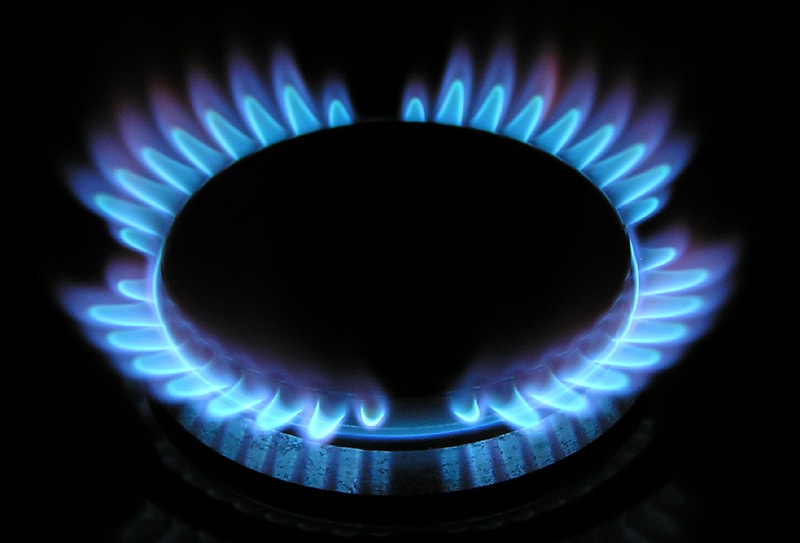Gas good, Electric Meh
For many of us who really enjoy cooking, being stuck with an electric stove is a terrible fate. The fine control and the instant response of an open flame is prerequisite for cooking Nirvana, the pitiful amount of control you get with electric just doesn’t cut it. At least not for this foodie. Then there’s the incomparable joy of being able to toss your pepper of choice right on the fire for that perfect char…….fuhgeddaboudit! The problem is that it’s not so easy to convert to gas. Or is it?
Yes, we’re crazy
This is a good place to say it. If you think the whole idea of spending a dime to ditch a perfectly good electric stove to install a gas stove is a bit silly, then fair enough. We’re probably a little nutty, but we like gas stoves a whole lot. If your electric stove is fine for you, you may still learn a little here, because we will be discussing a lot more than just stoves. How you cook is only one aspect of how you use energy, and much of the following is about how you use energy.
Natural Gas and pipe sizing and stuff
If you are already using gas in your home, this simplifies things a lot, although pipe sizing can be an issue. While it’s easy enough for a plumber to tap into an existing gas line, it must be of sufficient diameter to handle the maximum demands of all of the appliances hooked to it. This can not be taken for granted! It’s not uncommon for gas piping in a home to have barely enough capacity to handle what is already there, let alone that six burner monster truck of chef’s stoves you have been dreaming about. A high-end chef’s stove can easily use enough energy to heat a good-sized home. A more moderate stove may help mitigate the costs both at purchase and installation, if this is a problem. It’s a pain, but these things have to be taken into account for your equipment to work properly.
More on NG
Obviously, if you don’t have Natural Gas (NG) service to your house it will be a different problem altogether. If you have gas service available nearby it could be costly to get the service to your home, but the local NG company will often hook you up at little to no cost so long as you use two or more gas appliances. This opens up the possibility of converting to a high efficiency gas heat and hot water system to help mitigate the cost even further. Especially if you need help convincing a significant other beyond your “need” of a gas stove. Or justifying it to yourself for that matter. If you heat with an elderly oil burner, the expense of converting to high efficiency gas equipment is even more easily justified over time. There may also be other assistance, programs, and rebates to sweeten the deal further. Plus the stove, of course.
LPG and the stove of your dreams
Even if you have little hope of getting natural gas to your house, Liquid Petroleum Gas (AKA, LPG or Propane) is an option. It’s not cheap, but it may be worth it. The benefits of natural gas also accrue to LPG as far as high efficiency equipment and its clean burning properties. The catch is that LPG must be trucked to your home and stored in a tank, thereby bringing with it many of the disadvantages of oil heat. In the end the cost over time is so dependent on market forces that comparing LPG to oil is like playing the stock market (of course at least to some extent it is the same thing), but at least over the last ten to fifteen years it’s pretty much a wash. That said, local LPG companies often offer deals much like NG companies to help mitigate costs. If you have the resource to afford a very large LPG tank, you can fill it in the summertime on the cheap and reap the benefits for much of the winter.(LPG prices tend to fluctuate seasonally with oil and Gasoline prices due to the same market forces) This is another place where wanting a gas stove could really tip the scales. Bonus: if NG becomes available to you at a later date, LPG equipment can typically be converted to NG no problem.
You still need electricity
There are also electrical considerations, because gas stoves these days use electric igniters and require a 110v plug. Many recommend leaving the 220v line from the electric stove in place for flexibility and we’ve heard of some converting the existing 220v to 110v to save a few bucks, but that’s something to discuss with your electrician. One caveat to leaving the 220v in place is that some gas stoves may not have the room in back to accommodate leaving the old plug, so you may need to remove it. You also want to be careful about placement of the gas line and the 110v plug for the same reason; it can be cramped behind newer stoves.
Ok, that’s it
In conclusion, this is all to say that there is a lot to think about when choosing how to power your home or business (or a stove). “That’s how we’ve always done it” is just not so attractive any more. If you’re fine with how things are, all is well, but if you feel that it’s time for a change, please take the time to do your homework. You’ll be glad you did.
As always, we welcome questions and comments.

